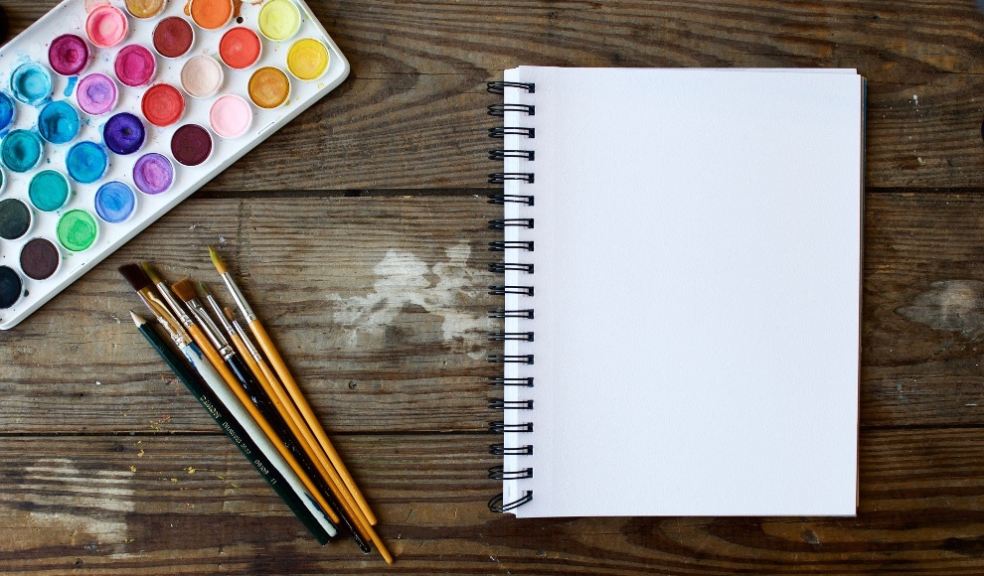
The UK's most popular therapeutic crafts
Painting is five times more popular with UK crafters than knitting
Knitting may have become more popular in recent years, but research has found that painting is 5.6 times more likely to be chosen as a hobby by UK crafters.
The study, which was conducted by pattern resource provider Design Bundles, found that the term “painting” was searched for 136,000 times in an average month, compared to “knitting”, which received 24,000 monthly searches.
With one in four people experiencing mental health problems in the UK each year, the research was carried out to analyse 30 different types of creative activities that are recommended for well-being, to discover the ten most popular ones.
Studies have shown that art therapy can help improve mental health by reducing the levels of the stress hormone cortisol, with this research finding that painting is – by far – the most popular way in which people can do this.
Drawing is also beneficial for people who struggle with high stress or anxiety levels, and with an average of 98,000 Google monthly searches, it’s the second most popular therapeutic craft.
A recent study showed that people who took a photo every day for two months noticed an improvement in their mental health.
Reassuringly, then, photography is third on the list of the UK’s most popular therapeutic craft activities. On average, the term “photography” is searched for 66,000 times a month – however, that’s still a whopping 70,000 fewer searches than “painting” gets.
Even less than that is fourth-placed crochet, which receives 54,000 monthly Google searches on average.
Calligraphy has been proven to enhance cognitive function in older people who have mild cognitive impairment and it’s the fifth most searched for therapeutic craft, receiving an average of 46,000 Google searches each month.
Tie-dye comes in sixth place, with 2,000 fewer monthly searches than calligraphy, yet 8,000 more than macramé, which was searched 36,000 times in an average month. This crafting technique – which became popular in the 1970s – uses knots to create a range of textiles from wall-hangings and hanging baskets to necklaces and keychains.
The ancient craft of origami is often associated with Japanese culture, and as well as being a form of paper art, it’s a type of meditation that can help the mind focus and promote calmness. Receiving an average of 34,000 monthly searches, it ranks eighth in this study.
Considering that painting is searched for a massive 136,000 times in an average month, it’s surprising that similar craft colouring receives 106,000 fewer searches. It’s still in the top ten, though, and colouring therapy has been shown to help relax the fear centre of the brain and reduce thoughts of a restless mind.
Knitting ranks tenth on the list of most popular therapeutic crafts, with 6,000 fewer monthly searches than colouring.
'792 million people are affected by mental health conditions worldwide, so it’s important that people know there are lots of different approaches they can take to help improve their mental well-being' says a spokesperson from Design Bundles. “These figures show that there is plenty of interest in crafts which also have therapeutic benefits, so hopefully we will continue to see activities such as painting, photography and calligraphy helping people manage their mental health.”
What are the UK’s most popular therapeutic crafts?
According to the research, the top ten most searched for therapeutic crafts in the UK are as follows:
|
Rank |
Therapeutic craft |
Average monthly searches (UK) |
|
1 |
Painting |
136,000 |
|
2 |
Drawing |
98,000 |
|
3 |
Photography |
66,000 |
|
4 |
Crochet |
54,000 |
|
5 |
Calligraphy |
46,000 |
|
6 |
Tie-Dye |
44,000 |
|
7 |
Macramé |
36,000 |
|
8 |
Origami |
34,000 |
|
9 |
Colouring |
30,000 |
|
10 |
Knitting |
24,000 |
How to do tie-dye
- First, you need to choose which garment you want to dye. It’s best to go for items made with natural fibres, like cotton, linen, rayon, hemp and silk. If you want to die a garment that’s not 100% cotton, an 80/20 cotton/polyester blend will work, however the colours won’t be as vibrant. You should avoid 50/50 cotton/polyester blends as the colours will be very pale.
- Scrunch up your garment and tie it with elastic bands or string.
- Dip the garment into buckets of fibre reactive dye. Alternatively, you can apply the dye using squirt bottles.
- After a while, rinse the garment to remove any excess dye and wash it before the first wear.
How to do macramé
Most macramé projects are made using just three basic knots:
The Cow Hitch
- Fold your length of cord in half and put the folded loop end behind the split ring or stick.
- Pull the loose ends up and through the loop you’ve just made.
- Pull the ends down tight to secure the knot.
The Square Knot
- Identify the four cords you want to use to tie the knot.
- Bring the left cord over the top and to the right of the middle cords. Place it under the far right cord.
- Fold the right cord under the middle cords, then up and out through the loop that’s been created by the left cord.
- Pull the cords tight to create the first half of the knot.
- Then, bring the right cord over the top and to the left of the middle cords. Place it under the far left cord.
- Fold the left cord under the middle cords, then up and out through the loop that’s been created by the right cord.
- Pull tightly to secure the knot.
The Wrap Knot
- Hold all the cords together vertically.
- Take a separate length of cord and create a loop with one long end and one short end, before laying it down the middle of the bundle.
- Start wrapping the long end around the bundle of cords – including the loop you’ve just made – making sure to leave the short end poking out the top.
- Once you’ve nearly reached the bottom of the loop, thread the end through it.
- Pull up the end that’s poking out of the top and tuck the bottom end up into the wrap, before trimming the ends.
Once you’ve mastered these three basic knots, you can go on to make a range of things, including hanging baskets, jewellery, table runners, dreamcatchers and keychains.











